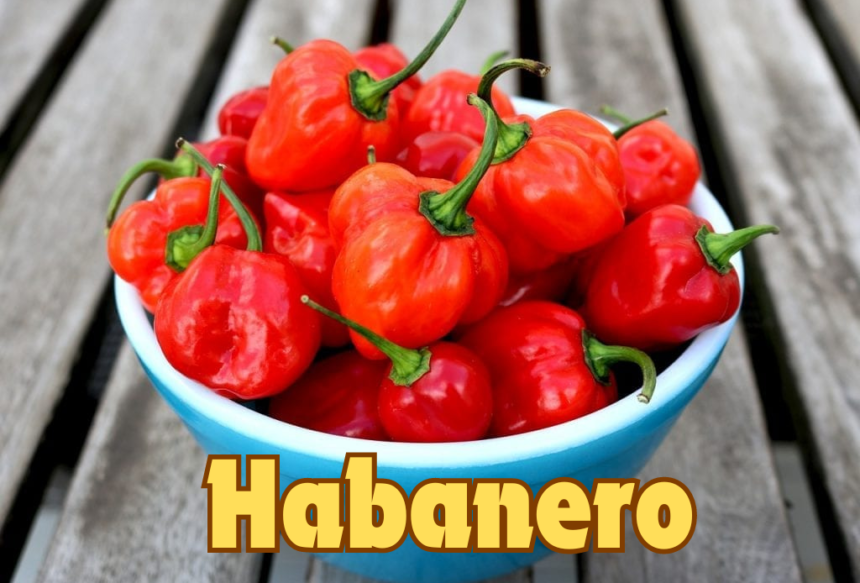Habanero peppers are renowned for their intense heat and distinct flavor. As one of the hottest chili peppers in the world, they are a favorite among spice enthusiasts and culinary adventurers. In this comprehensive guide, we will explore everything you need to know about habanero peppers, from growing them to incorporating them into your favorite dishes.
Introduction to Habanero Peppers
Haba nero peppers (Capsicum chinense) are native to the Amazon region and have a Scoville rating ranging from 100,000 to 350,000 units, making them significantly hotter than jalapeños. Their distinctive lantern shape and vibrant colors, ranging from green to red, orange, and even chocolate, make them a striking addition to any garden or dish.
Health Benefits of Habanero Peppers
Haba nero peppers are not just about heat; they are also packed with nutritional benefits. They are rich in vitamins A and C, both powerful antioxidants that help boost the immune system and promote healthy skin and eyes. Additionally, the capsaicin in habanero peppers has been linked to various health benefits, including:
- Pain Relief: Capsaicin is known to help reduce pain by desensitizing sensory receptors.
- Anti-Inflammatory Properties: It can help reduce inflammation and may be beneficial for conditions like arthritis.
- Metabolism Boost: Capsaicin has thermogenic properties that can help increase metabolism and aid in weight loss.
- Cancer Prevention: Some studies suggest that capsaicin may help inhibit the growth of cancer cells.
Growing Habanero Peppers
Growing haba nero peppers can be a rewarding experience, but it requires careful attention to detail. Here are the steps to successfully cultivate haba nero peppers in your garden.
Choosing the Right Seeds
Start by selecting high-quality haba nero seeds from a reputable supplier. There are various haba nero varieties, including the Red Savina, Caribbean Red, and Chocolate Haba nero. Each variety has a unique flavor profile and heat level.
Planting and Germination
- Soil Preparation: Haba nero peppers thrive in well-drained, fertile soil with a pH level between 6.0 and 6.5. Prepare the soil by mixing in organic compost to improve fertility and drainage.
- Starting Seeds Indoors: Haba nero seeds should be started indoors 8-10 weeks before the last frost date. Plant the seeds about 1/4 inch deep in seed trays filled with a good quality seed-starting mix.
- Germination Conditions: Maintain a soil temperature of 75-85°F (24-29°C) to ensure successful germination. Use a heat mat if necessary. Keep the soil moist but not waterlogged, and provide plenty of light.
Transplanting and Care
- Hardening Off: Before transplanting the seedlings outdoors, harden them off by gradually exposing them to outdoor conditions over a period of 7-10 days.
- Transplanting: Choose a sunny location for planting, as haba nero peppers need at least 6-8 hours of sunlight daily. Space the plants 18-24 inches apart to allow for adequate air circulation.
- Watering: Water the plants regularly, keeping the soil consistently moist but not soggy. Mulch around the plants to help retain moisture and reduce weed growth.
- Fertilization: Feed the plants with a balanced fertilizer every 4-6 weeks during the growing season. Avoid over-fertilizing, as too much nitrogen can lead to lush foliage but fewer peppers.
Pest and Disease Management
Haba nero peppers can be susceptible to pests like aphids, spider mites, and whiteflies. Regularly inspect the plants and use organic insecticidal soap or neem oil if needed. To prevent diseases, ensure good air circulation and avoid overhead watering to reduce the risk of fungal infections.
Harvesting Habanero Peppers
Haba nero peppers are ready to harvest approximately 90-100 days after transplanting, depending on the variety. The peppers should be firm and fully colored. Use pruning shears or a sharp knife to cut the peppers from the plant, leaving a small portion of the stem attached.
Using Habanero Peppers in Cooking
Haba nero peppers add a fiery kick to a wide range of dishes. Here are some creative ways to use them in your cooking.
Fresh and Raw
- Salsas and Sauces: Finely chop haba nero peppers and add them to salsas, hot sauces, and marinades for an intense heat and fruity flavor.
- Garnishes: Use thin slices of haba nero as a garnish for soups, salads, and tacos to add a burst of color and spice.
Cooked Dishes
- Chili and Stews: Add chopped haba nero peppers to chili, stews, and curries for a deep, rich heat that permeates the dish.
- Grilled and Roasted: Grill or roast haba nero peppers to mellow their heat slightly and bring out their natural sweetness. Use them in grilled meats, vegetables, or as part of a hot pepper medley.
Preservation Methods
- Drying: Dry haba nero peppers in a dehydrator or oven at a low temperature. Once dried, they can be ground into a fine powder or stored whole for later use.
- Pickling: Pickle haba nero peppers with vinegar, garlic, and spices to create a tangy, spicy condiment that can be used on sandwiches, salads, and more.
- Freezing: Freeze whole or chopped haba nero peppers to preserve their freshness. They can be used directly from the freezer in cooked dishes.
Safety Tips When Handling Habanero Peppers
Due to their high capsaicin content, handling haban ero peppers requires caution. Here are some safety tips to keep in mind:
- Wear Gloves: Always wear gloves when handling haba nero peppers to avoid skin irritation. Capsaicin can cause a burning sensation if it comes into contact with your skin.
- Avoid Touching Face: Be mindful not to touch your face, especially your eyes, after handling haba nero peppers. Capsaicin can cause severe irritation.
- Wash Hands Thoroughly: Wash your hands thoroughly with soap and water after handling haba nero peppers, even if you wore gloves.
Conclusion
Haba nero peppers are a versatile and flavorful addition to any culinary repertoire. Whether you’re growing them in your garden or incorporating them into your dishes, their intense heat and unique taste are sure to elevate your culinary creations. By following the tips and guidelines in this comprehensive guide, you can successfully grow, harvest, and use haba nero peppers to their fullest potential.



